I have, with envy, been following all my Facebook friends posting photos from Illustration Master Class 2011. I so much would have wanted to be there and be a part of that melting pot of artistic inspiration. But I couldn’t, and I wasn’t. ( Claus from my studio even went and got back to tell us all how great a time he had and how much he had learned ) So what is second best? If you cannot go and learn directly from the masters… Buckle up and teach yourself. In many ways I have been forced to be my own teacher right from the beginning. And it ain´t all bad. The upside is you only study what you like. The downside is you only study what you like.
Copy:
You can never see too much. Look through all the artbooks you can get your hands on. Notice how the artist of every painting solved a problem. I do not mean for you to only look when you need to solve a problem yourself. If you only look for solutions when you need them, you will only learn to solve the problem right at hand. If you beforehand have seen and understood the solution you can wrap the clarity around all the ugly little trouble bits when they pop up. I did that with water. I looked at Anders Zorn a lot and tried to get the grip on how he made water. I am not saying I can do water like Zorn now, far from it actually, but I have a small selection of watery effects that I can pull out in a tight spot. Imagine the same with rocks, clouds, trees and mountains.
Grow:
Pushing yourself to a higher level is the most important thing to me. I might have said it before, but Moebius once said “ I try 10 % new in every picture I do “, and that quote has stuck with me ever since I read it. In order to learn something all the time you need to get out of the comfort zone. Lets say I do a fighter looking bad ass and threatening. I’ve got to draw it as good as I can of course, but in doing that I focus my “new 10%” on hairstyle. The client will never notice, my friends will possibly not see it, but I will definitely know, that the hairdo on that sucker is young, fresh, new and something I have never done like that before. You see how this in a stretch of 20 paintings has made you grow seriously as an artist and has built up your visual vocabulary to the brim. Also, this little mindset keeps you from stalling artistically.
Studies and testing:
I have never been much into that, but I have heard that it is good. I bought tons of sketchbooks, dreaming of filling them out with doodles bursting from life and imagination. They end up being used by my children for finger-paint. I do sketch a lot, but almost only on projects that I am working on. ( when I read Justin Gerard’s updates and see all his testings, I feel like buying a new sketchbook )
Thumbs:
Try to tell a story in every picture. It doesn’t matter if it is a nude barbarian on a hilltop that you are sketching. The millions of ways you could tackle this is overwhelming. Telling a story, even in a posed figure, narrows down the choices and makes you focus on the facial expressions, the mood, the pose and well; yeah everything. This of course also means that you need to do more than just a thumb or two. In trying to tell the story right, you might need 20 or 30 (or even more) small tryouts before you make the right choice. To me, I need to see them on paper before I judge if they work. I guess you can feel it in your guts when you hit the right one. Everything seems to click. ( and sometimes un-click when you see the thumb the day after again )
Speed up:
This is a tricky advice. You should by no means do sloppy artwork. Once in a while you get a job or you deicide to do a painting that has room for some testing of your own. I had to do a poster a while back that was sort of a gesture for a friend. I had read on Todd Lockwood’s homepage that he did a dragon poster for a convention in only one day. I decided to try the same and see if I could do a full poster painting in only one day too. It is not my prettiest picture ever. A lot of the details could have been way better, and so on, and so on with the excuses. But the great thing is it taught me to simplify. The time limit forced me to take bolder chances and fix things without reference or safe holds and security lines of any sort. It was an experience I could use in every painting after that, and that I (now that I think about it) have completely forgotten. I need to do a one-day-painting again, I think.
I will get back to you if I think of anything more you can do to educate yourself, and force yourself to grow outside of your limits. Have you got any ideas you want to share with us on how you can teach yourself? Please do comment on this post. Gotta go. Today is my birthday and the rest of the studio guys are screaming for cake.


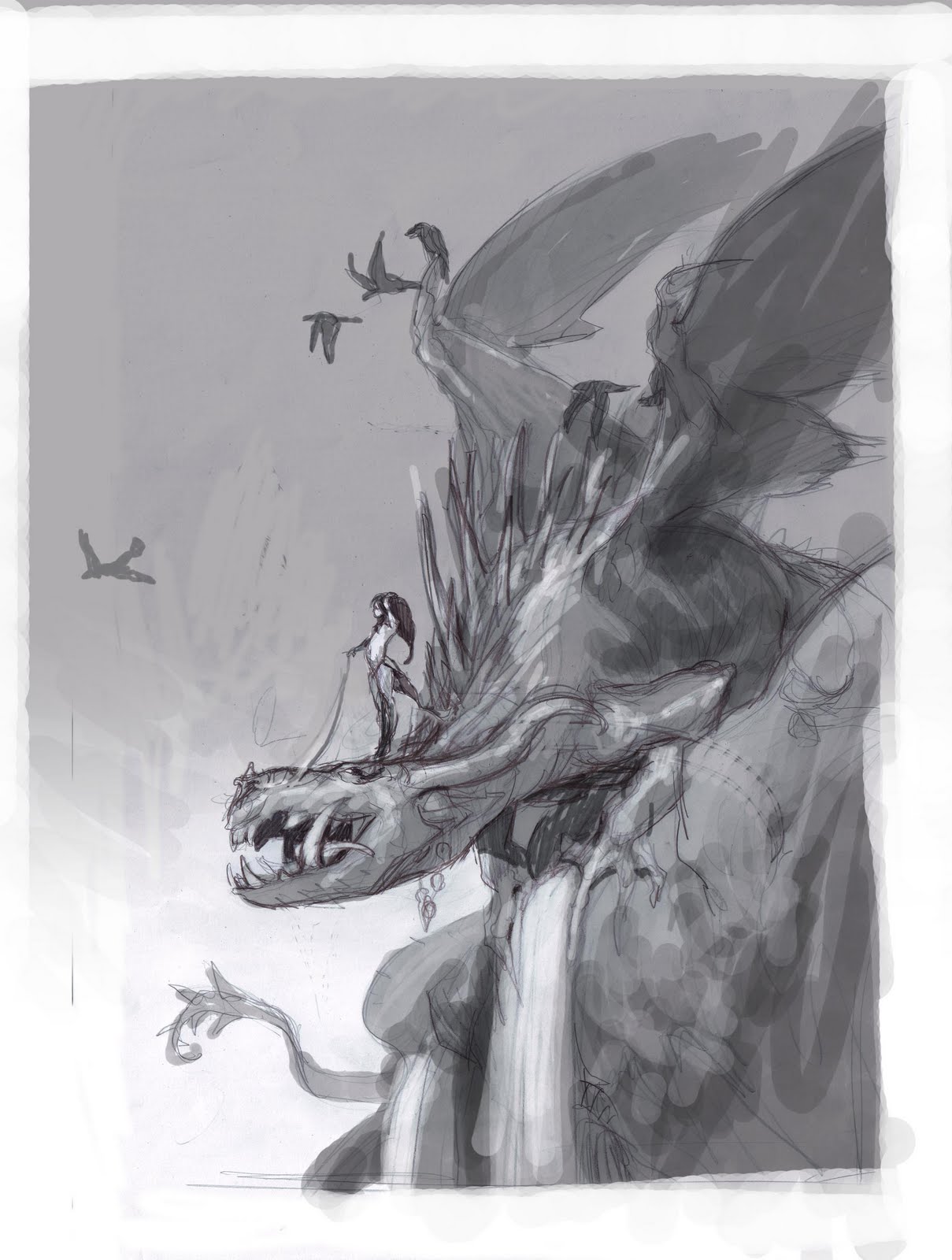
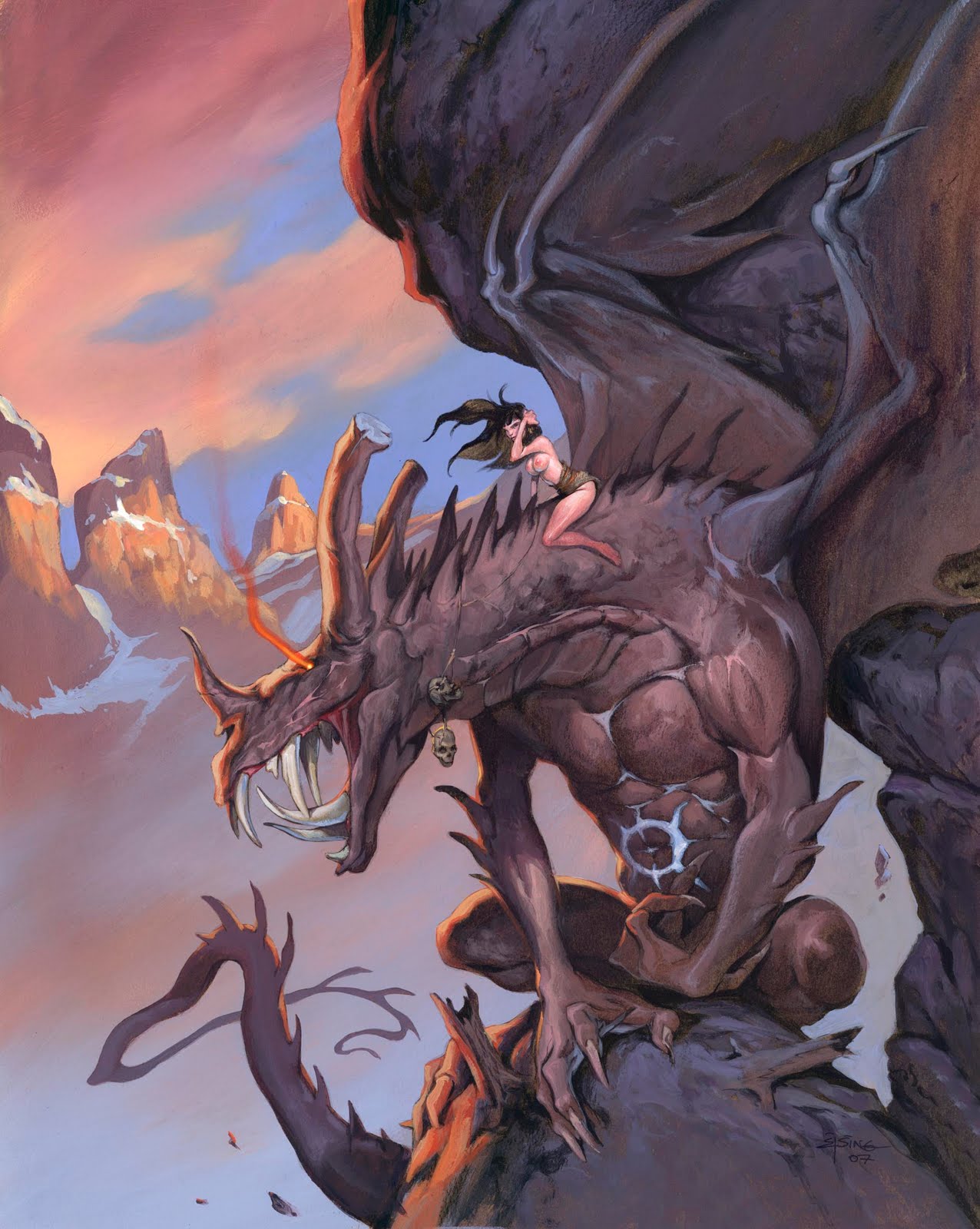
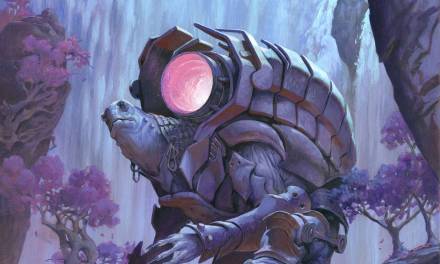
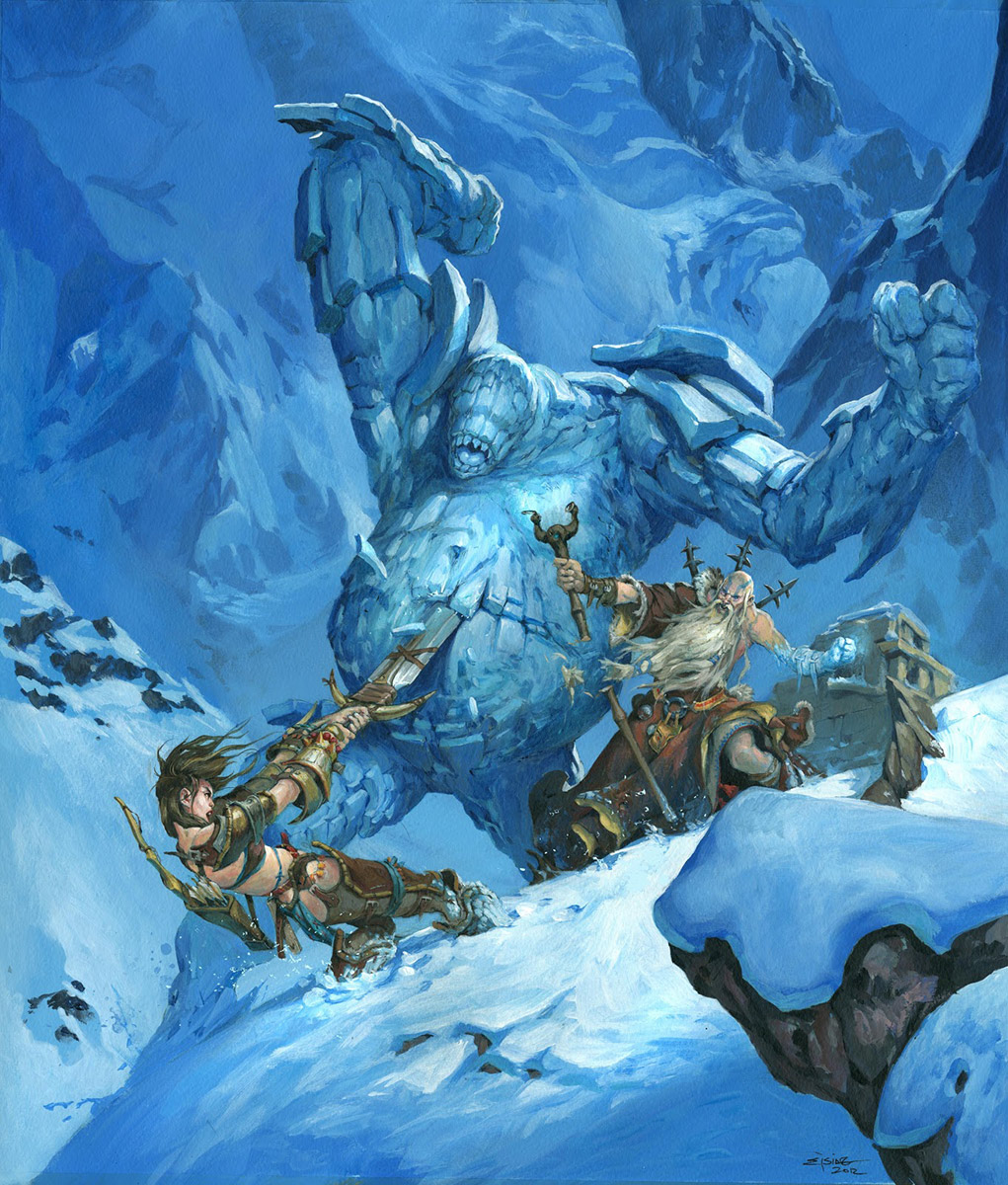
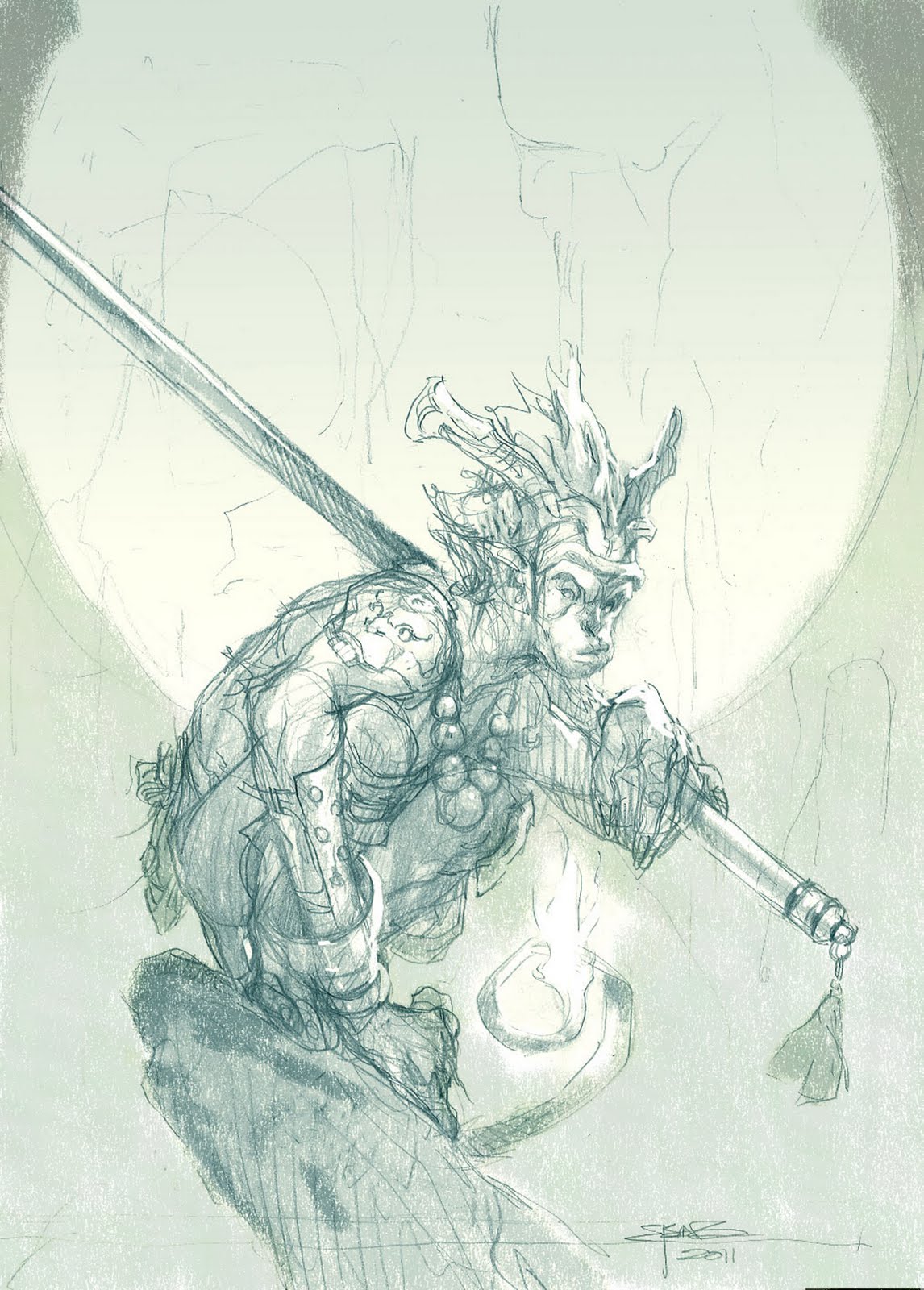

Happy Birthday from Russia!
Your blog is great! I always read it with pleasure. :))
Happy Birthday, Jesper, and great post. It's easy to get caught up in the grind and forget to push yourself out of your comfort zone. You're an inspiration!
Great Post, Jesper. I thoroughly dig what you're on about in this post, since it's what to me is the most inspiring and somewhat admirable thing when it comes to being an artist, having the discipline to push yourself and study on your own, and then making it happen. I've always dreamt of going to a fancy art school and really learn how to paint and draw properly, but artists having done it without, inspire me to keep at it every damn day. Artists such at you ;)…Have a great day, Jesper!
Happy Birthday from Brazil.
Thanks for the Inspiration
Thanks for the great Post! I am suffering from Master Class envy too so it really hit home;) Doing a “master study” has been really helpful (and humbling).
Happy Birthday!
Happy Birthday from the Heartland, Jesper! And, remember the question posed by Eddie Izzard: “Cake or death?”
Cake, please!
Happy Birthday from the U.S.! Thanks for the inspiration on ALL your posts!
Happy Birthday, but really you've given us the present in the form of a wonderful post full of great advice. I especially appreciate the bit about telling The Story. It is far too easy to become enamoured with the just the form that one loses sight of the narrative side of the illustration. Thanks again!
Tillykke med fødselsdagen!
Great post with great advice, and a very good quote with trying out 10% new in every image.
Happy birthday, Jesper!
Just wanted to say that your posts are my favorite ( no disrespect meant to the other guys. ) The topics that you post about are so relevant for someone who is in the art field, but feels like they need a kick in the butt! Thanks again.
Happy Birthday, Jesper! Enjoy the cake. I love the painting. You asked for any other advice, and the way I have grown most and learned a lot is by taking online classes and watching videos to see how the pros do it. The Art Department has some great ones as well as Gnomon Workshops. They can be pricey, but often I find even if I get one thing out of it, it's worth it.
Happy Birthday, Jesper!
Happy Birthday Jesper!!! Thank you for all of your wonderful work and the passion with which you continue to both educate and illuminate for all!
I'm trying to get better so that I can go to IMC and get the most out of it. That might sound kind of stupid, but I dont want to be struggling with basics when I have access to all these top illustrators. I want to learn what they have to teach about storytelling, process, how to use reference composition, etc.
The self teaching you describe is pretty much what I'm doing. It can be kind of lonely and discouraging sometimes, but its exciting to learn something new and know that you are moving forward.
I like that you always talk about what its like to be struggling to grow as an artist, it makes me feel better, thanks.
Happy Birthday Jesper! Meeting Claus at IMC was a real high-light! He is an absolute star! Pass on my best manly hugs to him…
That 10% bit is my favorite part. I'll be living by that motto now. Thanks for all the tips and Happy Birthday!
Thanks for the post Jesper, it was extremely encouraging. I am beginner Artist trying to teach myself this thing called Art. With no money or time to go to a “fancy Art school” 🙂 I'm stuck with learning what I can from lots of practice and any resources I can get my hands on.
I would add one tiny bit to what you said here, and that is that the one way I've grown the most is by drawing every chance I get. I read in a magazine once that they had put out this challenge to their readers to draw everyday for a year, and while I didn't make it all 365 days in a row, my drawing skills grew tremendously by simply trying to draw whenever I could. And our drawing skills always translate over into our painting skills.
Thanks again!
“I bought tons of sketchbooks, dreaming of filling them out with doodles bursting from life and imagination. They end up being used by my children for finger-paint”
I loved reading that, knowing that not every artist spends all his free time doodling away and producing sketches.
I have periods when I don't draw or paint (on paper or canvas that is) but spend my time painting miniatures or sculpting and I get that feeling that I at least should sketch things just to keep my drawing up.
And happy birthday, a bit late 🙂